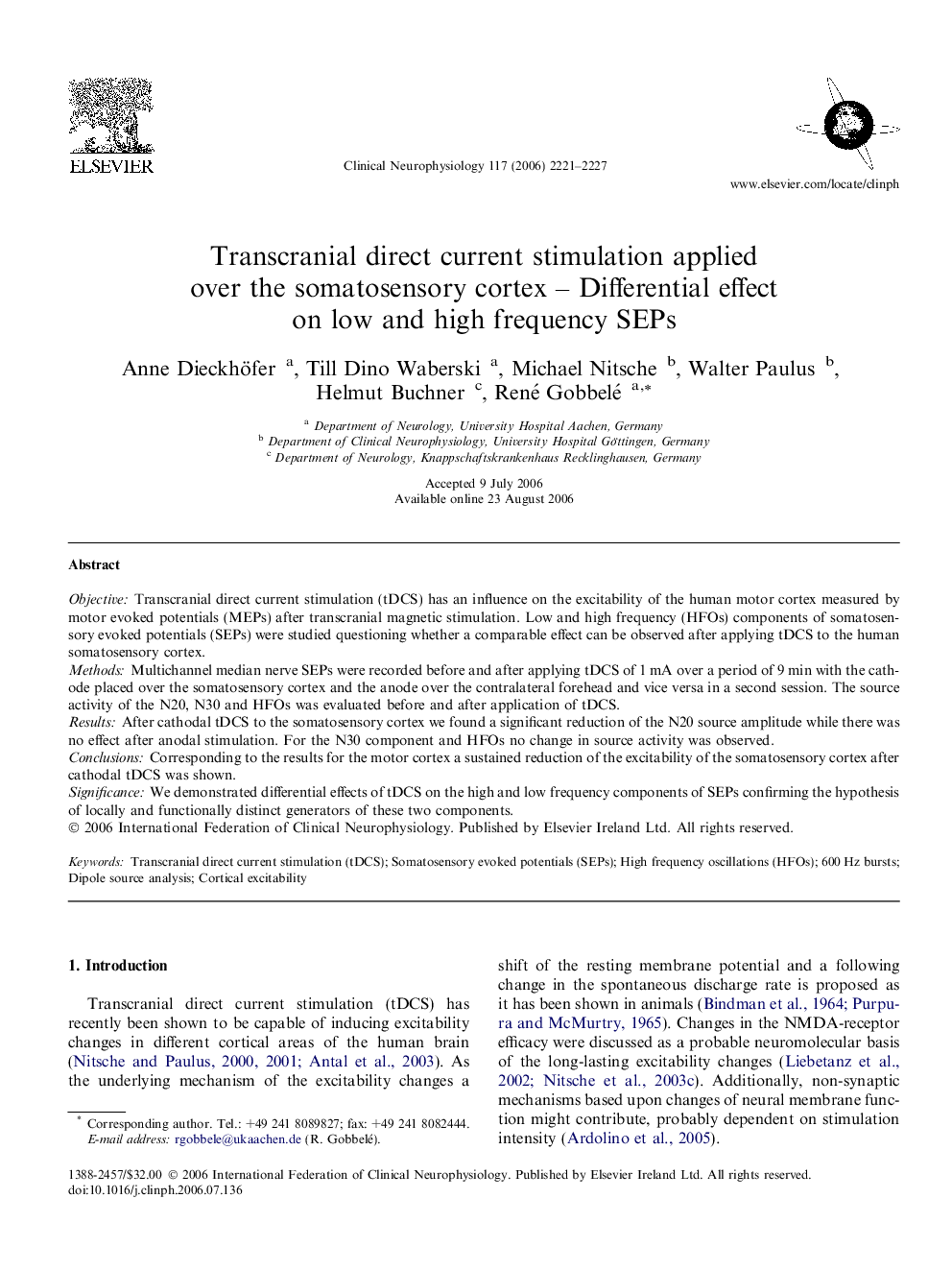| Article ID | Journal | Published Year | Pages | File Type |
|---|---|---|---|---|
| 3047670 | Clinical Neurophysiology | 2006 | 7 Pages |
ObjectiveTranscranial direct current stimulation (tDCS) has an influence on the excitability of the human motor cortex measured by motor evoked potentials (MEPs) after transcranial magnetic stimulation. Low and high frequency (HFOs) components of somatosensory evoked potentials (SEPs) were studied questioning whether a comparable effect can be observed after applying tDCS to the human somatosensory cortex.MethodsMultichannel median nerve SEPs were recorded before and after applying tDCS of 1 mA over a period of 9 min with the cathode placed over the somatosensory cortex and the anode over the contralateral forehead and vice versa in a second session. The source activity of the N20, N30 and HFOs was evaluated before and after application of tDCS.ResultsAfter cathodal tDCS to the somatosensory cortex we found a significant reduction of the N20 source amplitude while there was no effect after anodal stimulation. For the N30 component and HFOs no change in source activity was observed.ConclusionsCorresponding to the results for the motor cortex a sustained reduction of the excitability of the somatosensory cortex after cathodal tDCS was shown.SignificanceWe demonstrated differential effects of tDCS on the high and low frequency components of SEPs confirming the hypothesis of locally and functionally distinct generators of these two components.
